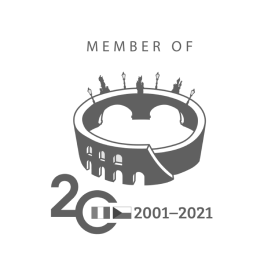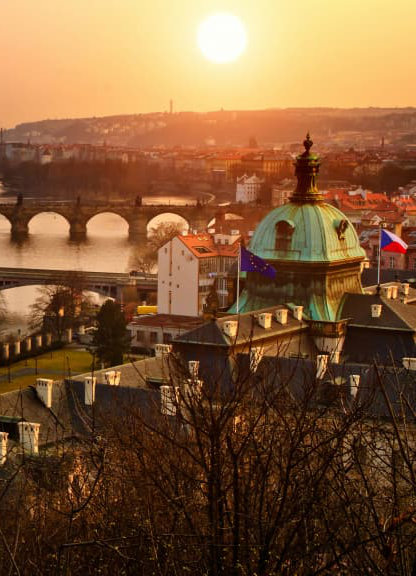
FLORENC AND MASARYKOVO NÁDRAŽÍ: GREEN LIGHT FOR URBAN REDEVELOPMENT IN THE HEART OF PRAGUE
The Prague City Council has recently approved an ambitious urban redevelopment project involving the area between Florenc and Masaryk Station (Masarykovo nádraží), a strategically located zone in the heart of the Czech capital. During their June meeting, the councillors gave the green light to two amendments to the city’s land-use plan, paving the way for a comprehensive transformation of this central area. The aim is to create a dynamic new district rich in public spaces, green areas, works of art, residential housing, and modern infrastructure with a strong emphasis on environmental sustainability and social integration.
A Public-Private Investment Worth Over 300 Million Crowns
The project, supported by private investors, entails financial and material commitments to the city and the districts involved particularly Prague 1 and Prague 8 worth a total of over CZK 300 million. The agreement includes the construction of a new municipal daycare center with four classrooms in Prague 8, new public spaces, five permanent public artworks, and a wide network of green infrastructure. According to Deputy Mayor for Urban Development Petr Hlaváček, this is much more than a standard construction project: “We are not just creating new housing, but an entire part of Prague worth living in.” The planned benefits for Prague 8 alone amount to around CZK 200 million, as also confirmed by Deputy Mayor Radomír Nepil.
Blue-Green Infrastructure and Urban Quality as Priorities
One of the project’s core features is the adoption of blue-green infrastructure design solutions aimed at managing rainwater and improving the urban microclimate. These include green roofs, rainwater collection and reuse systems, and new trees planted according to city standards. A detailed climate simulation has shown that these measures can significantly reduce the urban heat island effect, especially intense in densely built-up areas. Urban quality extends beyond greenery: the future public spaces will be designed to promote social interaction, accessibility, and attractiveness for both residents and visitors.
Signature Architecture and Transparent Planning
The architectural and urban design framework for the project stems from the international competition “Florenc 21,” which involved renowned architectural studios from across Europe and the Czech Republic. This decision reflects the administration’s commitment to ensuring a high standard of quality through open and participatory planning processes. “These new neighborhoods are not emerging by chance, but are the result of sophisticated and transparent planning,” emphasized Nepil. The mayor of Prague 1, Terezie Radoměřská, stressed how crucial it is that the financial contributions from the investor agreements are reinvested directly into enhancing public infrastructure in the city center benefiting both locals and tourists.
A Key Junction Between Three Districts and Two Eras
The Florenc area holds strategic importance for Prague. Situated at the crossroads of three districts Prague 1, Prague 8, and Karlín it acts as a link between the historic center and the city’s emerging zones. The amendments to the city zoning plan were developed in close collaboration with local residents, municipal authorities, and relevant institutions to ensure broad consensus and a shared vision. The new neighborhood will be designed according to the principles of the city of the future: short distances between urban functions, permeability of space, and a balanced mix of residential, work, cultural, and leisure uses.
The Transport Hub and the Future of the Bus Station
Beyond its urban dimension, the redevelopment also addresses transportation reorganization. In particular, the future of the Florenc bus station Prague’s main hub for long-distance travel remains uncertain. The city has tasked ROPID (Prague’s public transport authority) and the Institute of Planning and Development (IPR) with developing a new concept for managing intercity transport, which will assess whether the current location is suitable or if alternative sites might serve better. This phase represents a unique opportunity to rethink Prague’s entire metropolitan transport system in alignment with the city’s new urban vision.
With this ambitious project, Prague demonstrates how participatory, sustainable, and high-quality urban planning can become a tool for regenerating complex urban areas while simultaneously fostering social cohesion, economic development, and tourism appeal.
Sources: https://www.expats.cz/




